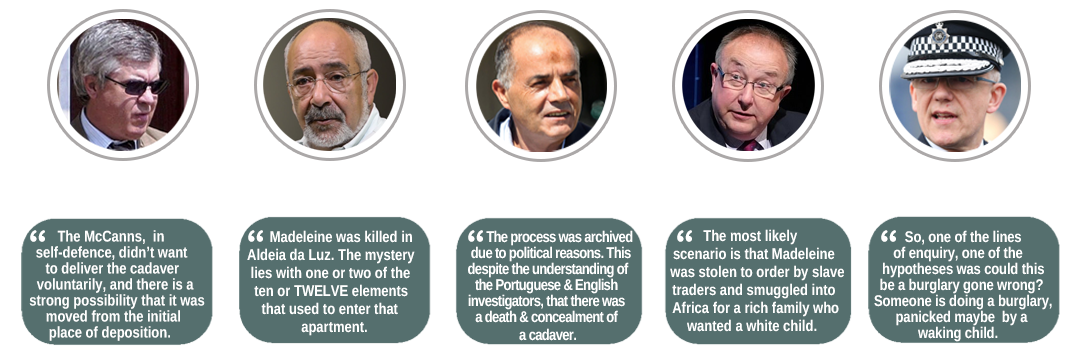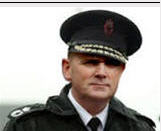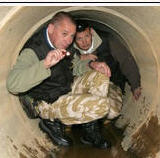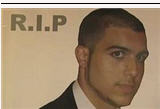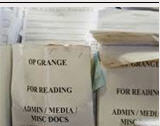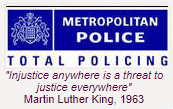CALPOL 'dangerous' for babies and young children
The Complete Mystery of Madeleine McCann™ :: Latest News and Debate :: Debate Section - for purporting theories
Page 1 of 1 • Share
 CALPOL 'dangerous' for babies and young children
CALPOL 'dangerous' for babies and young children
[You must be registered and logged in to see this link.]
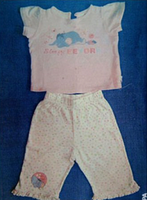
Tony Bennett- Researcher
- Posts : 16906
Activity : 24770
Likes received : 3749
Join date : 2009-11-25
Age : 76
Location : Shropshire
 Re: CALPOL 'dangerous' for babies and young children
Re: CALPOL 'dangerous' for babies and young children
Interesting article. Did not the father say they did give the children Calpol, even though the McCs denied it ?
 Re: CALPOL 'dangerous' for babies and young children
Re: CALPOL 'dangerous' for babies and young children
PeterMac wrote:Interesting article. Did not the father say they did give the children Calpol, even though the McCs denied it ?
MADELEINE'S GRANDFATHER ADMITS KATE “MAY HAVE USED CALPOL”
Brian Healy, the father of Kate McCann, admitted she “may have used Calpol” to help Madeleine to sleep, but said it was “just outrageous to think of anything else." Gerry and Kate strongly denied, on August 16, using any kind of drugs on their children to stop them waking up at night. Calpol is a common painkiller that is used, in UK, to to calm them down or help children to sleep. Twelve million bottles and packets of Calpol are sold every year, in UK.
[You must be registered and logged in to see this link.]
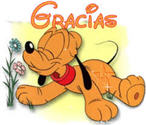
Gracias- Posts : 9
Activity : 9
Likes received : 0
Join date : 2011-05-06
 Re: CALPOL 'dangerous' for babies and young children
Re: CALPOL 'dangerous' for babies and young children
Call to ban food colourings used in medicines like Calpol after they are linked to hyperactive children
- Action on Additives said 19 children’s medicines sold in the UK - including Calpol infant suspension - contain colourings linked to hyperactivity
- The Medicines and Healthcare Regulatory Agency said the medicines are intended to be taken infrequently so additive intake from them is low
- The charity is worried about chronically ill children who need regular doses
By Sean Poulter
PUBLISHED: 00:02, 22 October 2013 | UPDATED: 01:08, 22 October 2013
Campaigners are calling for a ban on the E numbers that give children’s medicines such as Calpol their bright colours.
They have identified 52 products – including teething gels and painkillers designed for babies as young as two months – which contain additives linked to hyperactivity.
The artificial colours have effectively been banned from children’s food following research at the University of Southampton in 2005.
[You must be registered and logged in to see this image.]
The E number medicines: There are 52 remedies that make children hyperactive, campaigners claim
But the ‘Southampton Seven’ additives – six artificial colours and one preservative – still appear in medicines aimed at youngsters. Calpol, for example, gets its distinctive pink shade from carmoisine (E122).
Now health campaigners at Action On Additives are calling for the use of the additives in medicines to be outlawed. Co-ordinator Lizzie Vann Thrasher said: ‘Some of our most trusted children’s medicines contain unnecessary colourings that have been linked to hyperactivity and attention deficit disorders
Read more: [You must be registered and logged in to see this link.]
[/color]

Guest- Guest
 Re: CALPOL 'dangerous' for babies and young children
Re: CALPOL 'dangerous' for babies and young children
Paracetamol is dangerous at any age.
Take any amount over the recommended dose and you risk liver damage. That is why you can't buy huge bottles of the tablets anymore.
Take any amount over the recommended dose and you risk liver damage. That is why you can't buy huge bottles of the tablets anymore.

Guest- Guest
 Night Calpol
Night Calpol
The following was still available at the time of Madeline's "disappearance"...
Years ago there was talk of parents over-using Nightnurse on their children and themselves in order to get a decent night's sleep.
Interesting if the MC children were being given a drug banned in the UK 18 months later.
Calpol night (discontinued in the UK)
[You must be registered and logged in to see this image.]
How does it work?
Calpol night oral solution contains two active ingredients, paracetamol and diphenhydramine hydrochloride.
Paracetamol is a simple painkilling medicine used to relieve mild to moderate pain and fever. Despite its widespread use for over 100 years, we still don't fully understand how paracetamol works to relieve pain and reduce fever. However, it is now thought that it works by reducing the production of prostaglandins in the brain and spinal cord[You must be registered and logged in to see this image.].
The body produces prostaglandins in response to injury and certain diseases. One of the effects of prostaglandins is to sensitise nerve endings, causing pain (presumably to prevent us from causing further harm to the area). As paracetamol reduces the production of these nerve sensitising prostaglandins it is thought it may increase our pain threshold, so that although the cause of the pain remains, we can feel it less.
It is thought paracetamol reduces fever by affecting an area of the brain that regulates our body temperature (the hypothalamic heat-regulating center).
Diphenhydramine is a type of medicine called a sedating antihistamine. It enters the brain in sufficient quantities to cause drowsiness.
Diphenhydramine drys nasal secretions, by stopping a natural body chemical called histamine from binding to its receptors. Histamine is a chemical produced naturally by the body that has many effects, including the production of allergic symptoms, such as a runny nose. Blocking histamine receptors prevents the actions of histamine, which reduces the production of mucus in the nose.
The combination of active ingredients in this medicine is useful for relieving mild to moderate pain such as teething pain, headaches and sore throat, and for relieving the symptoms of feverish colds and flu in children. The relief from symptoms and the mild sedative effect caused by the medicine can also be helpful for aiding restful sleep.
What is it used for?
If you feel your child has experienced an allergic reaction[You must be registered and logged in to see this image.], stop using this medicine and inform your doctor or pharmacist immediately.
Side effects
Medicines and their possible side effects can affect individual people in different ways. The following are some of the side effects that are known to be associated with this medicine. Just because a side effect is stated here does not mean that all people using this medicine will experience that or any side effect.
For more information about any other possible risks associated with this medicine, please read the information provided with the medicine or consult your doctor or pharmacist.
How can this medicine affect other medicines?
You should not give your child other cough and cold medicines in combination with this one. Different products may contain the same active ingredient(s) and using more than one at the same time could lead to you exceeding the recommended dose for your child. For further advice talk to your pharmacist.
If your child is already taking any other medicines, including herbal medicines and those bought without a prescription, you should check with your pharmacist before giving this medicine as well, to make sure that the combination is safe.
You should not give your child other medicines that contain paracetamol in combination with this medicine, as this can easily result in exceeding the maximum recommended daily dose of paracetamol. Many cold and flu remedies and over-the-counter painkillers contain paracetamol, so be sure to check the ingredients of any other medicines before giving them with this one.
There may be an increased risk of drowsiness if this medicine is taken in combination with any of the following, which can also cause drowsiness:
There may be an increased risk of side effects such as dry mouth, blurred vision, constipation or difficulty passing urine if this medicine is taken with any of the following medicines:
Metoclopramide and domperidone may increase the absorption of paracetamol from the gut.
Long-term or regular use of paracetamol may increase the anti-blood-clotting effect of warfarin and other anticoagulant medicines, leading to an increased risk of bleeding. This effect does not occur with occasional pain-killing doses.
Read more: [You must be registered and logged in to see this link.]
Follow us: @NetDoctor on Twitter | NetDoctorUK on Facebook
Years ago there was talk of parents over-using Nightnurse on their children and themselves in order to get a decent night's sleep.
Interesting if the MC children were being given a drug banned in the UK 18 months later.
Calpol night (discontinued in the UK)
[You must be registered and logged in to see this image.]
| Mild to moderate pain, fever and colds in children | Paracetamol, diphenhydramine hydrochloride | McNeil |
Calpol night oral solution contains two active ingredients, paracetamol and diphenhydramine hydrochloride.
Paracetamol is a simple painkilling medicine used to relieve mild to moderate pain and fever. Despite its widespread use for over 100 years, we still don't fully understand how paracetamol works to relieve pain and reduce fever. However, it is now thought that it works by reducing the production of prostaglandins in the brain and spinal cord[You must be registered and logged in to see this image.].
The body produces prostaglandins in response to injury and certain diseases. One of the effects of prostaglandins is to sensitise nerve endings, causing pain (presumably to prevent us from causing further harm to the area). As paracetamol reduces the production of these nerve sensitising prostaglandins it is thought it may increase our pain threshold, so that although the cause of the pain remains, we can feel it less.
It is thought paracetamol reduces fever by affecting an area of the brain that regulates our body temperature (the hypothalamic heat-regulating center).
Diphenhydramine is a type of medicine called a sedating antihistamine. It enters the brain in sufficient quantities to cause drowsiness.
Diphenhydramine drys nasal secretions, by stopping a natural body chemical called histamine from binding to its receptors. Histamine is a chemical produced naturally by the body that has many effects, including the production of allergic symptoms, such as a runny nose. Blocking histamine receptors prevents the actions of histamine, which reduces the production of mucus in the nose.
The combination of active ingredients in this medicine is useful for relieving mild to moderate pain such as teething pain, headaches and sore throat, and for relieving the symptoms of feverish colds and flu in children. The relief from symptoms and the mild sedative effect caused by the medicine can also be helpful for aiding restful sleep.
What is it used for?
- Relieving the symptoms of colds and flu, such as aches and pains, fever, and runny, stuffy or tickly nose.
- Relieving mild to moderate pain, such as headache, sore throat or teething pain.
- Reducing high temperature (fever).
- March 2009: Over-the-counter cough and cold medicines for children have recently been under review in the UK. New advice is that several cough and cold medicines, including this one, are no longer recommended for children under six years of age. This is because there is no evidence that they work in this age group, and they can potentially cause side effects such as allergic reactions, effects on sleep or hallucinations. The packaging and leaflets for cough and cold medicines will be updated over the next year to reflect this information. When the newly labelled products become available they will only be sold from pharmacies, where advice on using the medicines safely can be given. Products with old labelling that give doses for children under six won't be immediately withdrawn from sale, because there are no immediate safety issues with them and they have been in wide use for decades. However, you should no longer give these medicines to children under six. The new recommendations are part of a long-term package of measures that are being phased in to improve the safe use of cough and cold medicines in children under 12 years of age. If you have just given this medicine to a child under six there is no need to worry, provided they were given the dose recommended on the bottle, but you shouldn't use this medicine for them in the future. Children aged 6 to 12 years can still be given this medicine, because the risk of side effects is reduced in older children as they weigh more, get fewer colds and can also tell you if the medicine is doing them any good. For more advice talk to your pharmacist.
- The recommended dose of this medicine varies depending on the age of your child. Carefully follow the dosage instructions provided with this medicine. Do not exceed the recommended dose. The medicine should be administered carefully using the spoon or measuring device supplied to ensure the child does not receive more than the maximum dose.
- This medicine must not be given with any other cough and cold remedies or paracetamol containing products. Many over-the-counter painkillers and cold and flu remedies contain paracetamol. It is important to check the ingredients of any medicines you buy without a prescription before giving them in combination with this medicine. Seek further advice from your pharmacist.
- An overdose of paracetamol is dangerous and capable of causing serious damage to the liver and kidneys. You should never exceed the dose stated in the information leaflet supplied with the medicine. Immediate medical advice should be sought in the event of an overdose with this medicine, even if your child seems well, because of the risk of delayed, serious liver damage.
- This medicine may cause drowsiness. If your child is affected they should avoid performing potentially hazardous activities such as riding a bike or climbing trees. Alcohol[You must be registered and logged in to see this image.] should be avoided.
- If symptoms persist for more than three days consult your doctor.
- Decreased kidney function.
- Decreased liver function[You must be registered and logged in to see this image.].
- Epilepsy.
- Difficulty passing urine (urinary retention).
- Obstruction of the gut.
- Children under six years of age.
- Closed angle glaucoma.
- Rare hereditary problems of fructose intolerance (Calpol night contains maltitol and sorbitol).
If you feel your child has experienced an allergic reaction[You must be registered and logged in to see this image.], stop using this medicine and inform your doctor or pharmacist immediately.
Side effects
Medicines and their possible side effects can affect individual people in different ways. The following are some of the side effects that are known to be associated with this medicine. Just because a side effect is stated here does not mean that all people using this medicine will experience that or any side effect.
- Drowsiness.
- Blurred vision.
- Disturbances of the gut such as constipation, nausea, vomiting or abdominal pain.
- Dry mouth, nose and throat.
- Skin rash.
- Difficulty in passing urine (urinary retention).
For more information about any other possible risks associated with this medicine, please read the information provided with the medicine or consult your doctor or pharmacist.
How can this medicine affect other medicines?
You should not give your child other cough and cold medicines in combination with this one. Different products may contain the same active ingredient(s) and using more than one at the same time could lead to you exceeding the recommended dose for your child. For further advice talk to your pharmacist.
If your child is already taking any other medicines, including herbal medicines and those bought without a prescription, you should check with your pharmacist before giving this medicine as well, to make sure that the combination is safe.
You should not give your child other medicines that contain paracetamol in combination with this medicine, as this can easily result in exceeding the maximum recommended daily dose of paracetamol. Many cold and flu remedies and over-the-counter painkillers contain paracetamol, so be sure to check the ingredients of any other medicines before giving them with this one.
There may be an increased risk of drowsiness if this medicine is taken in combination with any of the following, which can also cause drowsiness:
- alcohol[You must be registered and logged in to see this image.]
- benzodiazepines, eg temazepam, diazepam
- sedating antihistamines, eg promethazine, hydroxyzine, triprolidine, chlorphenamine (these are often found in other non-prescription cough and cold or hayfever remedies)
- sleeping tablets[You must be registered and logged in to see this image.], eg zopiclone
- strong opioid painkillers, eg codeine, dihydrocodeine, morphine
- tricyclic antidepressants, eg amitriptyline.
There may be an increased risk of side effects such as dry mouth, blurred vision, constipation or difficulty passing urine if this medicine is taken with any of the following medicines:
- anticholinergic medicines for urinary incontinence[You must be registered and logged in to see this image.], eg oxybutynin, flavoxate, tolterodine, propiverine, trospium
- antipsychotic medicines, eg chlorpromazine, clozapine
- antispasmodics, eg atropine, hyoscine
- certain antisickness medicines, eg promethazine, prochlorperazine, meclozine, cyclizine
- muscle relaxants, eg baclofen
- MAOI antidepressants, eg phenelzine, tranylcypromine
- procyclidine
- tricyclic or related antidepressants, eg amitriptyline, maprotiline.
Metoclopramide and domperidone may increase the absorption of paracetamol from the gut.
Long-term or regular use of paracetamol may increase the anti-blood-clotting effect of warfarin and other anticoagulant medicines, leading to an increased risk of bleeding. This effect does not occur with occasional pain-killing doses.
Read more: [You must be registered and logged in to see this link.]
Follow us: @NetDoctor on Twitter | NetDoctorUK on Facebook
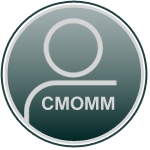
AB1- Posts : 49
Activity : 51
Likes received : 0
Join date : 2013-10-27
The Complete Mystery of Madeleine McCann™ :: Latest News and Debate :: Debate Section - for purporting theories
Page 1 of 1
Permissions in this forum:
You cannot reply to topics in this forum

